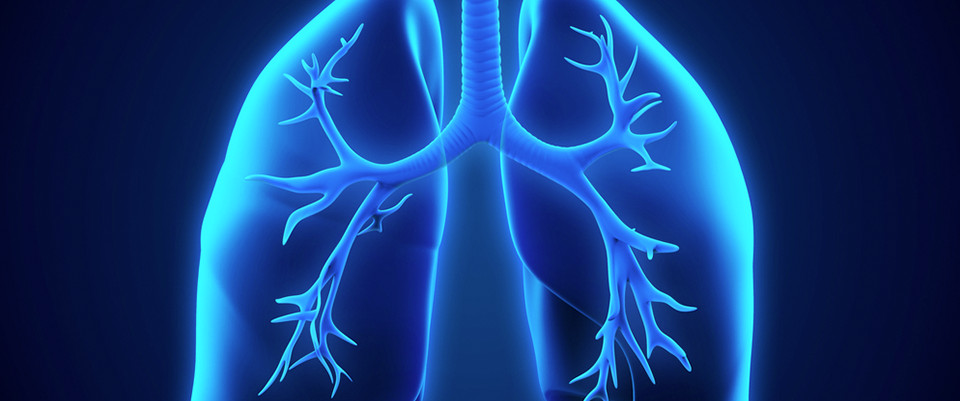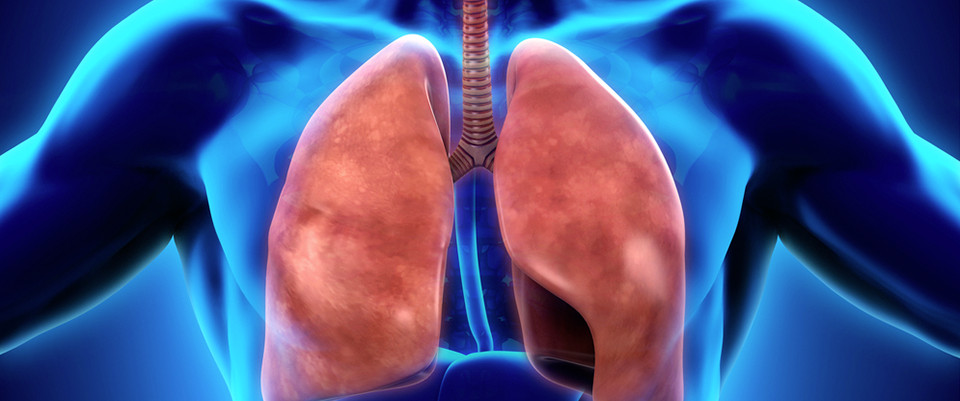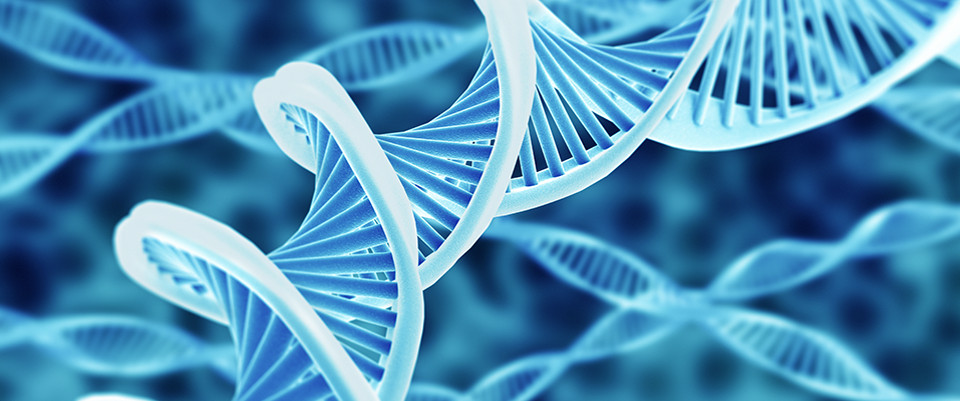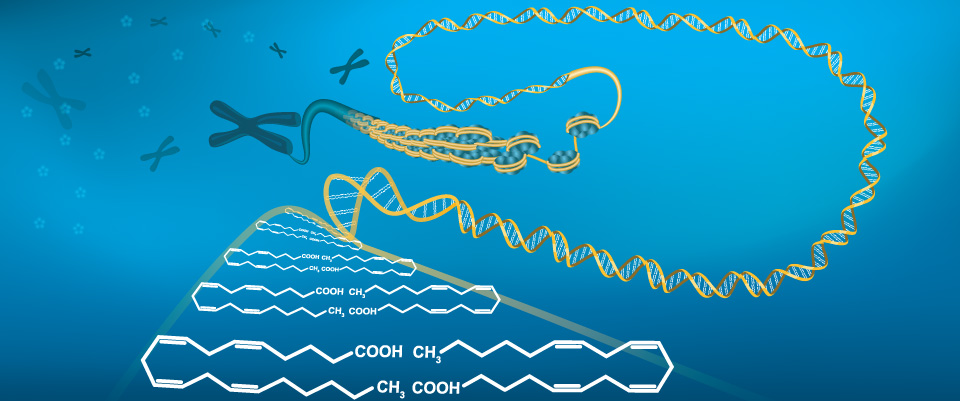PubMed
Metabolic Regulation of Tissue Stem Cells.
Related Articles
Metabolic Regulation of Tissue Stem Cells.
Trends Cell Biol. 2020 Apr 28;:
Authors: Shapira SN, Christofk HR
Abstract
Adult tissue stem cells mediate organ homeostasis and regeneration and thus are continually making decisions about whether to remain quiescent, proliferate, or differentiate into mature cell types. These decisions often integrate external cues, such as energy balance and the nutritional status of the organism. Metabolic substrates and byproducts that regulate epigenetic and signaling pathways are now appreciated to have instructive rather than bystander roles in regulating cell fate decisions. In this review, we highlight recent literature focused on how metabolites and dietary manipulations can impact cell fate decisions, with a focus on the regulation of adult tissue stem cells.
PMID: 32359707 [PubMed - as supplied by publisher]
Metabolomic approach to measuring quality of chilled chicken meat during storage.
Related Articles
Metabolomic approach to measuring quality of chilled chicken meat during storage.
Poult Sci. 2020 May;99(5):2543-2554
Authors: Wen D, Liu Y, Yu Q
Abstract
The metabolites of stored, chilled chicken meat were analyzed using liquid chromatograph-mass spectrometry and metabolomics. The results showed significant differences in the metabolites of chicken meat stored at 4°C for 0 D and meat stored for longer periods of 2 D, 4 D, 6 D, and 10 D, when analyzed based on a variable of importance >2 and P < 0.05. These changed metabolites included amino acids, amines, nucleosides, nucleotides, carbohydrates, organic acids, and other substances. The data from this study provide a holistic understanding of food quality changes in chicken meat during deterioration in storage.
PMID: 32359590 [PubMed - in process]
Metabolomics reveals differential mechanisms of toxicity of hyperbranched poly(ethyleneimine)-derived nanoparticles to the soil-borne fungus Verticillium dahliae Kleb.
Related Articles
Metabolomics reveals differential mechanisms of toxicity of hyperbranched poly(ethyleneimine)-derived nanoparticles to the soil-borne fungus Verticillium dahliae Kleb.
Pestic Biochem Physiol. 2020 May;165:104535
Authors: Lykogianni M, Papadopoulou EA, Sapalidis A, Tsiourvas D, Sideratou Z, Aliferis KA
Abstract
There is a consensus on the urge for the discovery and assessment of alternative, improved sources of bioactivity that could be developed as plant protection products (PPPs), in order to combat issues that the agrochemical sector is facing. Based on the recent advances in nanotechnology, nanoparticles seem to have a great potential towards the development of the next generation nano-PPPs used as active ingredients (a.i.) per se or as nanocarriers in their formulation. Nonetheless, information on their mode(s)-of-action (MoA) and mechanisms of toxicity is yet largely unknown, representing a bottleneck in their further assessment and development. Therefore, we have undertaken the task to assess the fungitoxicity of hyperbranched poly(ethyleneimine) (HPEI), quaternized hyperbranched poly(ethyleneimine) (QPEI), and guanidinylated hyperbranched poly(ethyleneimine) (GPEI) nanoparticles to the soil-born plant pathogenic fungus Verticillium dahliae Kleb, and dissect their effects on its metabolism applying GC/EI/MS metabolomics. Results revealed that functionalization of HPEI nanoparticles with guanidinium end groups (GPEI) increases their toxicity to V. dahliae, while functionalization with quaternary ammonium end groups (QPEI) decreases it. The treatments with the nanoparticles affected the chemical homeostasis of the fungus, altering substantially its amino acid pool, energy production, and fatty acid content, causing additionally oxidative and osmotic stresses. To the best of our knowledge, this is the first report on the comparative toxicity of HPEI, QPEI, and GPEI to filamentous fungi applying metabolomics. The findings could be exploited in the study of the quantitative structure-activity relationship (QSAR) of HPEI-derived nanoparticles and their further development as nano-PPPs.
PMID: 32359556 [PubMed - in process]
The yeast (Saccharomyces cerevisiae) YCF1 vacuole transporter: Evidence on its implication into the yeast resistance to flusilazole as revealed by GC/EI/MS metabolomics.
Related Articles
The yeast (Saccharomyces cerevisiae) YCF1 vacuole transporter: Evidence on its implication into the yeast resistance to flusilazole as revealed by GC/EI/MS metabolomics.
Pestic Biochem Physiol. 2020 May;165:104475
Authors: Karamanou DA, Aliferis KA
Abstract
The development of plant protection product (PPPs)-resistant populations of plant pathogens, pests, and weeds, represents a major challenge that the crop protection sector is facing. Focusing on plant pathogenic fungi, the increased efflux of the active ingredients (a.i.) from the cytoplasm is highly correlated to elevated resistance levels to the applied fungicides. Such mechanism is regulated by ATP-binding cassette transporters (ABC transporters), and although it has been investigated for the past two decades, the latest developments in "omics" technologies could provide new insights with potential applications in crop protection. Within this context, and based on results from preliminary experiments, we have undertaken the task of mining the involvement of the ABC transporter YCF1, which is located in the vacuole membrane, in the fungicide resistance development, applying a functional genomics approach and using yeast (Saccharomyces cerevisiae) as the model organism. Among the fungicides being assessed, flusilazole, which belongs to the azole group of dimethylation inhibitors (DMIs), was discovered as a possible substrate of the YCF1. GC/EI/MS metabolomics analysis revealed the effect of the fungicide's toxicity and that of genotype on yeast's metabolism, confirming the role of this transporter. Fluctuations in the activity of various yeast biosynthetic pathways associated with stress responses were recorded, and corresponding metabolites-biomarkers of flusilazole toxicity were discovered. The metabolites α,α-trehalose, glycerol, myo-inositol-1-phosphate, GABA, l-glutamine, l-tryptophan, l-phenylalanine, l-tyrosine, and phosphate, were the major identified biomarkers of toxicity. Among these, are metabolites that play important roles in fungal metabolism (e.g., cell responses to osmotic stress) or serve as signaling molecules. To the best of our knowledge, this is the first report on the implication of YCF1 in fungal resistance to PPPs. Additionally, the results of GC/EI/MS yeast metabolomics confirmed the robustness of the method and its applicability in the high-throughput study of fungal resistance to fungicides.
PMID: 32359550 [PubMed - in process]
Considering the Immune System during Fecal Microbiota Transplantation for Clostridioides difficile Infection.
Related Articles
Considering the Immune System during Fecal Microbiota Transplantation for Clostridioides difficile Infection.
Trends Mol Med. 2020 May;26(5):496-507
Authors: Frisbee AL, Petri WA
Abstract
Our understanding and utilization of fecal microbiota transplantation (FMT) has jump-started over the past two decades. Recent technological advancements in sequencing and metabolomics have allowed for better characterization of our intestinal microbial counterparts, triggering a surge of excitement in the fields of mucosal immunology and microbiology. This excitement is well founded, as demonstrated by 90% relapse-free cure rates in FMT treatment for recurrent Clostridioides difficile infections. Growing evidence suggests that in addition to bacterial factors, the host immune response during C. difficile infection greatly influences disease severity. In this review, we discuss recent advancements in understanding the interplay between immune cells and the microbiota and how they may relate to recovery from C. difficile through FMT therapy.
PMID: 32359480 [PubMed - in process]
Understanding the early stages of peptide formation during the biosynthesis of teicoplanin and related glycopeptide antibiotics.
Understanding the early stages of peptide formation during the biosynthesis of teicoplanin and related glycopeptide antibiotics.
FEBS J. 2020 May 02;:
Authors: Kaniusaite M, Tailhades J, Kittilä T, Fage CD, Goode RJA, Schittenhelm RB, Cryle MJ
Abstract
The biosynthesis of the glycopeptide antibiotics (GPAs) demonstrates the exceptional ability of non-ribosomal peptide synthesis to generate diverse and complex structures from an expanded array of amino acid precursors. Whilst the heptapeptide cores of GPAs share a conserved C-terminus, including the aromatic residues involved crosslinking and that are essential for the antibiotic activity of GPAs, most structural diversity is found within the N-terminus of the peptide. Furthermore, the origin of the (D)-stereochemistry of residue 1 of all GPAs is currently unclear, despite its importance for antibiotic activity. Given these important features, we have now reconstituted modules 1-4 of the non-ribosomal peptide synthetase (NRPS) assembly lines that synthesise the clinically-relevant type IV GPA teicoplanin and the related compound A40926. Our results show that important roles in amino acid modification during the NRPS-mediated biosynthesis of GPAs can be ascribed to the actions of condensation domains present within these modules, including the incorporation of (D)-amino acids at position 1 of the peptide. Our results also indicate that hybrid NRPS assembly lines can be generated in a facile manner by mixing NRPS proteins from different systems, and that uncoupling of peptide formation due to different rates of activity seen for NRPS modules can be controlled by varying the ratio of NRPS modules. Taken together, this indicates that NRPS assembly lines function as dynamic peptide assembly lines and not static megaenzyme complexes, which has significant implications for biosynthetic redesign of these important biosynthetic systems.
PMID: 32359003 [PubMed - as supplied by publisher]
A comparison of high-throughput plasma NMR protocols for comparative untargeted metabolomics.
Related Articles
A comparison of high-throughput plasma NMR protocols for comparative untargeted metabolomics.
Metabolomics. 2020 May 01;16(5):64
Authors: Bliziotis NG, Engelke UFH, Aspers RLEG, Engel J, Deinum J, Timmers HJLM, Wevers RA, Kluijtmans LAJ
Abstract
INTRODUCTION: When analyzing the human plasma metabolome with Nuclear Magnetic Resonance (NMR) spectroscopy, the Carr-Purcell-Meiboom-Gill (CPMG) experiment is commonly employed for large studies. However, this process can lead to compromised statistical analyses due to residual macromolecule signals. In addition, the utilization of Trimethylsilylpropanoic acid (TSP) as an internal standard often leads to quantification issues, and binning, as a spectral summarization step, can result in features not clearly assignable to metabolites.
OBJECTIVES: Our aim was to establish a new complete protocol for large plasma cohorts collected with the purpose of describing the comparative metabolic profile of groups of samples.
METHODS: We compared the conventional CPMG approach to a novel procedure that involves diffusion NMR, using the Longitudinal Eddy-Current Delay (LED) experiment, maleic acid (MA) as the quantification reference and peak picking for spectral reduction. This comparison was carried out using the ultrafiltration method as a gold standard in a simple sample classification experiment, with Partial Least Squares-Discriminant Analysis (PLS-DA) and the resulting metabolic signatures for multivariate data analysis. In addition, the quantification capabilities of the method were evaluated.
RESULTS: We found that the LED method applied was able to detect more metabolites than CPMG and suppress macromolecule signals more efficiently. The complete protocol was able to yield PLS-DA models with enhanced classification accuracy as well as a more reliable set of important features than the conventional CPMG approach. Assessment of the quantitative capabilities of the method resulted in good linearity, recovery and agreement with an established amino acid assay for the majority of the metabolites tested. Regarding repeatability, ~ 85% of all peaks had an adequately low coefficient of variation (< 30%) in replicate samples.
CONCLUSION: Overall, our comparison yielded a high-throughput untargeted plasma NMR protocol for optimized data acquisition and processing that is expected to be a valuable contribution in the field of metabolic biomarker discovery.
PMID: 32358672 [PubMed - as supplied by publisher]
Serum triglycerides in Alzheimer disease: Relation to neuroimaging and CSF biomarkers.
Related Articles
Serum triglycerides in Alzheimer disease: Relation to neuroimaging and CSF biomarkers.
Neurology. 2020 May 01;:
Authors: Bernath MM, Bhattacharyya S, Nho K, Barupal DK, Fiehn O, Baillie R, Risacher SL, Arnold M, Jacobson T, Trojanowski JQ, Shaw LM, Weiner MW, Doraiswamy PM, Kaddurah-Daouk R, Saykin AJ, Alzheimer's Disease Neuroimaging Initiative and Alzheimer's Disease Metabolomics Consortium
Abstract
OBJECTIVE: To investigate the association of triglyceride (TG) principal component scores with Alzheimer disease (AD) and the amyloid, tau, neurodegeneration, and cerebrovascular disease (A/T/N/V) biomarkers for AD.
METHODS: Serum levels of 84 TG species were measured with untargeted lipid profiling of 689 participants from the Alzheimer's Disease Neuroimaging Initiative cohort, including 190 cognitively normal older adults (CN), 339 with mild cognitive impairment (MCI), and 160 with AD. Principal component analysis with factor rotation was used for dimension reduction of TG species. Differences in principal components between diagnostic groups and associations between principal components and AD biomarkers (including CSF, MRI and [18F]fluorodeoxyglucose-PET) were assessed with a generalized linear model approach. In both cases, the Bonferroni method of adjustment was used to correct for multiple comparisons.
RESULTS: The 84 TGs yielded 9 principal components, 2 of which, consisting of long-chain, polyunsaturated fatty acid-containing TGs (PUTGs), were significantly associated with MCI and AD. Lower levels of PUTGs were observed in MCI and AD compared to CN. PUTG principal component scores were also significantly associated with hippocampal volume and entorhinal cortical thickness. In participants carrying the APOE ε4 allele, these principal components were significantly associated with CSF β-amyloid1-42 values and entorhinal cortical thickness.
CONCLUSION: This study shows that PUTG component scores were significantly associated with diagnostic group and AD biomarkers, a finding that was more pronounced in APOE ε4 carriers. Replication in independent larger studies and longitudinal follow-up are warranted.
PMID: 32358220 [PubMed - as supplied by publisher]
Phenylalanine is a novel marker for radiographic knee osteoarthritis progression: the MOST study.
Related Articles
Phenylalanine is a novel marker for radiographic knee osteoarthritis progression: the MOST study.
J Rheumatol. 2020 May 01;:
Authors: Zhai G, Sun X, Randel E, Liu M, Wang N, Tolstykh I, Rahman P, Torner J, Lewis CE, Nevitt MC, Guermazi A, Roemer F, Felson DT
Abstract
OBJECTIVE: To identify plasma markers associated with an increased risk of radiographic knee osteoarthritis (OA) progression using a metabolomics approach.
METHODS: Study participants were from the Multicenter Osteoarthritis Study (MOST) and were categorized into two groups based on the presence of baseline radiographic OA. Subjects in group 1 had unilateral knee OA and subjects in group 2 had bilateral knee OA. Progression was defined as ≥ a half-grade worsening in joint space width at 30-month follow-up. For group 1, a participant progressed when their OA knee showed radiographic progression and the contralateral knee developed OA; for group 2, a participant progressed when both knees with OA showed radiographic progression. Metabolomic profiling was performed on plasma samples collected at baseline and logistic regression was performed to test the association between each metabolite and knee OA progression after adjustment for age, sex, BMI, and clinic site. Significance was defined as p0.0003 in the combined analysis.
RESULTS: 234 progressors (57 in group 1 and 177 in group 2) and 322 non-progressors (206 in group 1 and 116 in group 2) were included in analyses. Among 157 metabolites studied, we found that odds of progression were 1.46 times higher per standard deviation (SD) increase of phenylalanine level (95% CI: 1.20 -1.77, p=0.0001) in the combined analysis. Sex specific analysis showed that an association was seen in women (p=0.0002) but not in men.
CONCLUSION: Our data suggest that phenylalanine might be a novel plasma marker for higher risk of bilateral radiographic knee OA progression in women.
PMID: 32358162 [PubMed - as supplied by publisher]
Cellular Plasticity in Response to Suppression of Storage Proteins in the Brassica napus Embryo.
Related Articles
Cellular Plasticity in Response to Suppression of Storage Proteins in the Brassica napus Embryo.
Plant Cell. 2020 Apr 30;:
Authors: Rolletschek H, Schwender J, König C, Chapman KD, Romsdahl T, Lorenz C, Braun HP, Denolf P, Audenhove KV, Munz E, Heinzel N, Ortleb S, Rutten T, McCorkle S, Borysyuk T, Gündel A, Shi H, Vander Auwermeulen M, Bourot S, Borisjuk L
Abstract
The trade-off between protein and oil storage in oilseed crops has been tested here in oilseed rape (Brassica napus) by analyzing the effect of suppressing key genes encoding protein storage products (napin, cruciferin). The phenotypic outcomes were assessed using nuclear magnetic resonance and mass spectrometry imaging, microscopy, transcriptomics, proteomics, metabolomics, lipidomics, immunological assays as well as by flux balance analysis. Surprisingly, the profile of storage products was only moderately changed in RNAi transgenics. However, embryonic cells had undergone remarkable architectural rearrangements. The suppression of storage proteins led to the elaboration of membrane stacks enriched with oleosin (6-fold higher protein abundance) and novel ER morphology. Protein rebalancing, and amino acid metabolism were focal points of the metabolic adjustments to maintain embryonic carbon/nitrogen homeostasis. Flux balance analysis indicated a rather minor additional demand for cofactors (ATP, NADPH). The conclusion was that cellular plasticity in seeds protects against perturbations to its storage capabilities, and hence contributes materially to homeostasis. The study provides novel mechanistic insights into the intriguing link between lipid and protein storage, which have implications for biotechnological strategies directed at the improvement of oilseed crops.
PMID: 32358071 [PubMed - as supplied by publisher]
The EARLY DETECTION RESEARCH NETWORK: A National Infrastructure to Support the Discovery, Development and Validation of Cancer Biomarkers.
Related Articles
The EARLY DETECTION RESEARCH NETWORK: A National Infrastructure to Support the Discovery, Development and Validation of Cancer Biomarkers.
Cancer Epidemiol Biomarkers Prev. 2020 May 01;:
Authors: Srivastava S, Wagner PD
Abstract
In 2000, the US National Cancer Institute established the Early Detection Research Network (EDRN), an investigator-driven network to conduct translational research to identify, develop and validate biomarkers for the early cancer detection and risk assessment. This consortium of more than 300 investigators at academic institutions and in the private sector are working collaboratively to bring biomarkers and imaging methods to clinical fruition. These scientists represent diverse disciplines, including genomics, proteomics, metabolomics, bioinformatics, imaging, clinical medicine, and public health. Although significant roadblocks have hindered the field of biomarker discovery, the EDRN has helped overcome many of them by setting well-defined strategies and milestones focused on solving defined unmet clinical needs. The EDRN has implemented measures to improve biomarker discovery and validation, such as data sharing, use of common data elements, generating multi-disciplinary and multi-institutional collaborations within a cohesive and productive team environment, and putting emphasis on quality control and data replication for all candidate biomarkers for reaching a "go" or "no go" decision. A measure of the success of the EDRN are the number of biomarkers tests or devices approved by the Food and Drug Administration to which EDRN investigators have made significant contributions and the number of biomarkers tests developed by EDRN investigators that are available in Clinical Laboratory Improvement Amendments (CLIA) laboratories.
PMID: 32357955 [PubMed - as supplied by publisher]
Neonatal hair profiling reveals a metabolic phenotype of monochorionic twins with selective intrauterine growth restriction and abnormal umbilical artery flow.
Related Articles
Neonatal hair profiling reveals a metabolic phenotype of monochorionic twins with selective intrauterine growth restriction and abnormal umbilical artery flow.
Mol Med. 2020 May 01;26(1):37
Authors: Yang J, Wei Y, Qi H, Yin N, Yang Y, Li Z, Xu L, Wang X, Yuan P, Li L, Han TL, Zhao Y
Abstract
BACKGROUND: Selective intrauterine fetal growth restriction (sIUGR) in monochorionic diamniotic twins, especially types 2&3 with abnormal umbilical artery Doppler, results in increased risk of fetal/perinatal mortality and postnatal disability. We investigate whether the hair metabolome profiles of neonates were associated with the pathophysiological differences across the different clinical forms of sIUGR in twins.
METHODS: Hair samples were collected at delivery from 10 pairs of type 1 sIUGR twins, 8 pairs of types 2&3 sIUGR twins, and 11 pairs of twins without sIUGR. The hair metabolome was characterized using gas chromatography-mass spectrometry.
RESULTS: Our results demonstrated that the hair metabolite profiles of the different sIUGR subclinical forms were associated with the averaged fetal growth rate after 28 weeks of gestation but not with birthweight. The hair profiles were capable of discriminating type2&3 sIUGR twins from twins without sIUGR. In particular, the metabolites 2-aminobutyric acid, cysteine, alanine, and tyrosine all displayed areas under the receiver operating characteristic curve were above 0.9. The metabolic pathway analysis highlighted the associations of sIUGR twins with abnormal umbilical artery flow with increased metabolites from a nutrient depletion pathway, glutathione metabolism, and nerve development.
CONCLUSION: This study offers novel insight into the severity of intrauterine ischemia and hypoxia for T2&3 sIUGR twins, through evaluation of the neonatal hair metabolome.
PMID: 32357834 [PubMed - as supplied by publisher]
metabolomics; +21 new citations
21 new pubmed citations were retrieved for your search.
Click on the search hyperlink below to display the complete search results:
metabolomics
These pubmed results were generated on 2020/05/02PubMed comprises more than millions of citations for biomedical literature from MEDLINE, life science journals, and online books.
Citations may include links to full-text content from PubMed Central and publisher web sites.
metabolomics; +21 new citations
21 new pubmed citations were retrieved for your search.
Click on the search hyperlink below to display the complete search results:
metabolomics
These pubmed results were generated on 2020/05/02PubMed comprises more than millions of citations for biomedical literature from MEDLINE, life science journals, and online books.
Citations may include links to full-text content from PubMed Central and publisher web sites.
metabolomics; +27 new citations
27 new pubmed citations were retrieved for your search.
Click on the search hyperlink below to display the complete search results:
metabolomics
These pubmed results were generated on 2020/05/01PubMed comprises more than millions of citations for biomedical literature from MEDLINE, life science journals, and online books.
Citations may include links to full-text content from PubMed Central and publisher web sites.
metabolomics; +27 new citations
27 new pubmed citations were retrieved for your search.
Click on the search hyperlink below to display the complete search results:
metabolomics
These pubmed results were generated on 2020/05/01PubMed comprises more than millions of citations for biomedical literature from MEDLINE, life science journals, and online books.
Citations may include links to full-text content from PubMed Central and publisher web sites.
metabolomics; +21 new citations
21 new pubmed citations were retrieved for your search.
Click on the search hyperlink below to display the complete search results:
metabolomics
These pubmed results were generated on 2020/04/30PubMed comprises more than millions of citations for biomedical literature from MEDLINE, life science journals, and online books.
Citations may include links to full-text content from PubMed Central and publisher web sites.
metabolomics; +21 new citations
21 new pubmed citations were retrieved for your search.
Click on the search hyperlink below to display the complete search results:
metabolomics
These pubmed results were generated on 2020/04/30PubMed comprises more than millions of citations for biomedical literature from MEDLINE, life science journals, and online books.
Citations may include links to full-text content from PubMed Central and publisher web sites.
metabolomics; +24 new citations
24 new pubmed citations were retrieved for your search.
Click on the search hyperlink below to display the complete search results:
metabolomics
These pubmed results were generated on 2020/04/29PubMed comprises more than millions of citations for biomedical literature from MEDLINE, life science journals, and online books.
Citations may include links to full-text content from PubMed Central and publisher web sites.
metabolomics; +24 new citations
24 new pubmed citations were retrieved for your search.
Click on the search hyperlink below to display the complete search results:
metabolomics
These pubmed results were generated on 2020/04/29PubMed comprises more than millions of citations for biomedical literature from MEDLINE, life science journals, and online books.
Citations may include links to full-text content from PubMed Central and publisher web sites.











